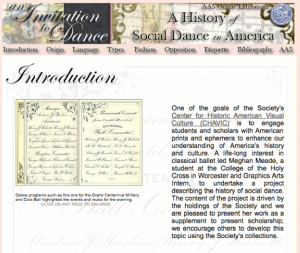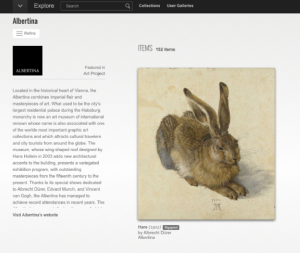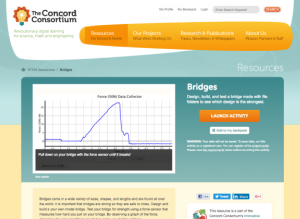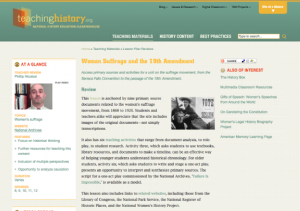General Interest
Back to Top
|
 |
|
PredictWise
|
Social studies |
|
From politics to sports to market research to just about every conceivable business venture, the ability to accurately - or even semi-accurately - predict the future comes with profound benefits. It is no surprise, then, that economist David M. Rothschild's PredictWise has become so popular among pundits of all kinds. Using peer-reviewed prediction and sentiment models, Rothschild accurately predicted 50 of 51 Electoral College outcomes in February of 2012, an average of 20 of 24 Oscars from 2013 to 2015, and 15 of 15 knockout games in the 2014 World Cup. Readers may like to begin by scouting the latest political figures, which currently predict Democratic victories in both the presidential election and the upcoming Senate race. From there, scan the Sports section (as of May 12, 2016 the Chicago Cubs have a 20 percent chance of winning the world series), as well as predictions Entertainment and Economic/Financial. Readers will also find a link to Rothschild's blog, where he unpacks some of his predictions in greater detail.[CNH] |
|





|
|
 |
|
American Birding Association
|
Science |
|
The American Birding Association (ABA) is a non-profit with a two pronged goal: to support and educate birders and to protect birds. On the site, interested readers may like to begin with the ABA Blog, which is updated daily and offers posts about rare bird sightings, information on migrations, habitat alerts, and beautiful photographs of some of North America's most delightful feathered friends. Birding enthusiasts might also find much to appreciate on the Birding News page, where they will find up-to-the-minute updates on bird activity in all 50 sates and around the world. The site also features numerous links to a variety of publications, events, conservation efforts, and other listings designed to help birders do what they love best. Finally, the Young Birders page offers a blog of its own, as well as a Facebook group and links to summer camps. In all, the ABA provides a stellar host of resources for birding enthusiasts from around the country. [CNH] |
|





|
|
 |
|
An Invitation to Dance: A History of Social Dance in America
|
Social studies |
|
This online exhibit from the American Antiquarian Society (AAS) traces the history and culture of social dance in the United States. For early Americans, as the introduction explains, social dance was a form of communication, an acknowledgement of rank and class, and a means of cultural expression. Dances came to 18th and 19th century America from France, England, Scotland, and Ireland, then mixed with one another to create new forms. In addition to the thorough introduction, readers may like to explore sections dedicated to Origins, Language, Types, Fashion, Opposition, and Etiquette, as well as a Bibliography for those interested in browsing the primary and secondary sources behind the exhibit. The Opposition section may be of special interest, as it features diatribes by founding Puritans such as Increase and Cotton Mather, George Whitefield, and others who objected to the spectacle of men and women engaging in the sins of carnality that were implied by "mixed" dances. [CNH] |
|





|
|
 |
|
Google Cultural Institute: Albertina
|
Arts |
|
The Google Cultural Institute, with its digital images of millions of artworks, offers many diverse wonders, including this phenomenal catalog from the Albertina. Founded in Vienna in 1805, the Albertina houses one of world's largest and most significant print rooms, featuring approximately 65,000 drawings and nearly a million old master prints. With this exhibit, readers may peruse 152 of these artworks, starting with Albrecht Durer's 16th century masterpiece, Hare, and progressing through Degas' 1905 painting, Two Dancers, and Rudolf von Alt's, View of the Alservorstadt, in which the artist captures a single moment in time from 1872. Clicking on Details calls up more information about each work of art. In addition, the images boast an astonishingly high resolution, so that readers may zoom in to the degree that they can actually see the brush strokes that a painter used 400 years ago to depict a bowl of fruit or a religious vision. [CNH] |
|





|
|
 |
|
Los Angeles Chamber Orchestra: Podcasts
|
Arts |
|
For more than fifty years, the Los Angeles Chamber Orchestra (LACO) has recorded 31 albums, toured Europe, South America, and Japan, and performed across North America. Now readers can gain an insider's perspective on LACO by listening to its frequent podcasts, which are available for free on this website. In one recent recording, for instance, cellist Joshua Roman discussed his long time affiliation for the works of Bach, while in another violinist and YouTube sensation Stefan Jackiw speaks about his teen years and his path to international renown. The page also links out to photos of the orchestra, an excellent LACO blog, recordings that can be listened to online, and a special section for educators. [CNH] |
|





|
|
 |
|
The World Bank: Annual Report 2015
|
Social studies |
|
The World Bank has been publishing an annual report, in which it provides an in-depth analysis of a particular aspect of economic development, since 1978. Past reports have tackled such topics as agriculture, youth, equity, public services delivery, labor, and infrastructure. The Annual Report 2015 focused its energies on the intention to end extreme poverty around the world by the year 2030. Here readers may peruse the Report's sections, including Leadership Perspectives, Operational Highlights, Regions, Roles and Resources, Fiscal Year Data, Financial Statements, and WBG Summary Results. The WBG Summary Results section is especially interesting, as it features a map that outlines where the World Bank invested $60 billion in loans, grants, equity investments, and guarantees to partner countries and private businesses. For readers who are interested in the global effort to reduce poverty, or in the World Bank's policies more generally, this page will serve as an informative resource. [CNH] |
|





|
|
 |
|
Atlas of Emotions
|
Social studies |
|
In June 2014, world renowned emotions expert Paul Ekman sent a survey out to 248 active emotion researchers around the world. In their responses, 88 percent of the respondents agreed that there are Universal Emotions, that is, emotions that all humans feel, no matter where they live or how they are raised. There was also a broad consensus on which emotions are universal, including anger, fear, disgust, sadness, and enjoyment. To navigate this engaging Atlas of Emotions, readers may select any of the five emotions to begin. From there, readers will find more information, including categories such as Triggers, Actions, and Moods. For instance, selecting Triggers under the Anger emotion leads to a graphic depicting the typical triggers that lead to an angry response, such as encountering offensive beliefs, being wrongfully accused, and rejection by a loved one. The site is exceptional for its interactive graphics and a layout that breaks down complex topics into easily understandable information. Anyone who wants to better understand human emotions will find much to appreciate here. [CNH] |
|





|
|
 |
|
Awful Library Books
|
Language Arts |
|
Created by Mary Kelly and Holly Hibner, two public librarians in Michigan, the Awful Library Books website exists in part to showcase books that have been weeded, or removed, from library collections. That is, titles that at one time seemed like a good acquisition, but have become outdated or are no longer relevant. Some examples of this type of title currently on view include "Antiques for Men," 1974; "Mentally Defective Children," 1914; "Law Enforcement Employment Guide," 1989; and "Those Amazing Leeches," 1988. The site also provides resources on the art and science of weeding and collection development for librarians and others, under the Practical Librarian tab. For anyone looking to suggest awful books to be added to this site, complete instructions can be found under the Submissions tab. [DS] |
|





|
|























